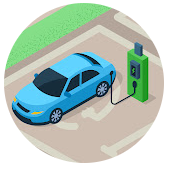
The European Automotive Industry: On the Brink of Transformation
The automotive industry in Europe is at a critical juncture. Known as a backbone of the EU economy, contributing 7% to the GDP and employing nearly 14 million people, it now faces its most significant transformation to date. The integration of artificial intelligence (AI), digital technologies, and a move toward decarbonization are changing the landscape of automotive manufacturing and design.
Challenges that Modernize the Industry
With emerging technologies reshaping the automotive space, the transition to sustainable electric vehicles (EVs) is not merely an option but a necessity. The industry’s transformation is driven by the need for innovation in vehicle technology, such as autonomous and connected systems. However, challenges like international competition and high production costs threaten the sector's viability. According to McKinsey, up to €440 billion in GDP could be at risk if the industry fails to adapt by 2035.
Embracing Change: The Nine-Point Action Plan
In reaction to these formidable challenges, industry experts have proposed a comprehensive nine-point action plan to aid European automotive players. This plan centers on three key areas signified by the acronym "ERA": Economics, Resilience, and Decarbonization. These foundations will not only support the industry's transformation but will also ensure that Europe remains a competitive player in the global automotive market.
The Role of Technology in this New Era
Technological advancements like AI-powered tools will be pivotal as the automotive industry evolves. For small and medium business owners trying to adapt, utilizing AI website builders and algorithmic web design solutions can streamline operations, making it easier to embrace digital interfaces and online markets. Next-gen web builder AI platforms offer businesses powerful resources to develop a professional online presence with minimal effort.
Why This Matters to Small and Medium Business Owners
The transition in the automotive landscape not only affects large manufacturers but creates ripples across the supply chain, including parts manufacturers and aftermarket service providers. For small business owners, understanding and leveraging new technologies like intelligent web frameworks and AI-enhanced web construction can present opportunities for growth. Staying updated with industry trends is vital for sustainability and competitiveness.
Conclusion: A Call for Collective Action
The European automotive industry's transformation symbolizes a broader shift towards a technologically advanced and environmentally conscious future. It's essential for all players—from manufacturers to small business owners—to come together to implement the action plan laid out by industry experts. By adopting new technologies, including AI tools for business, companies can prepare to not only thrive but also innovate in this rapidly changing environment.
Stay ahead of the curve by exploring how digital and AI tools can enhance your operations. Understand their capabilities, and take the necessary steps now to ensure your business remains relevant and competitive in the evolving automotive landscape. Start by researching and using the best AI tools suited for your business needs today.
 Add Row
Add Row  Add
Add 




Write A Comment